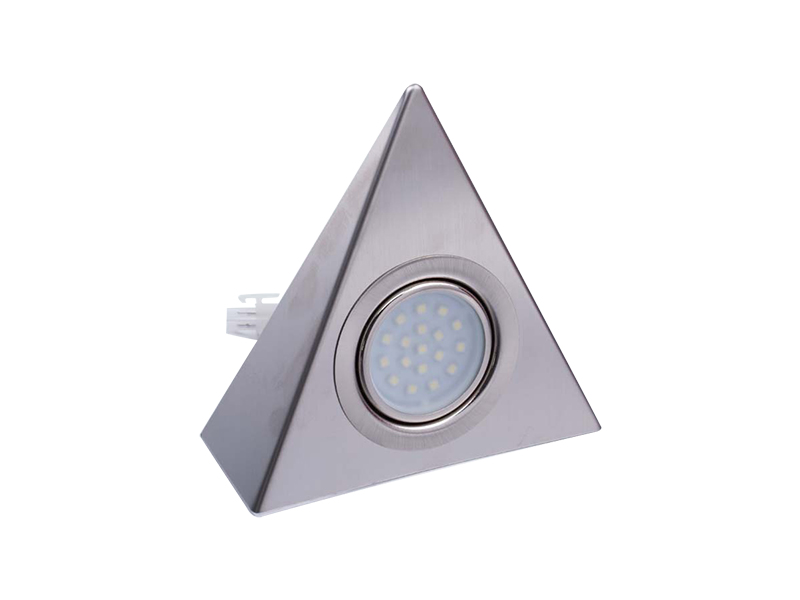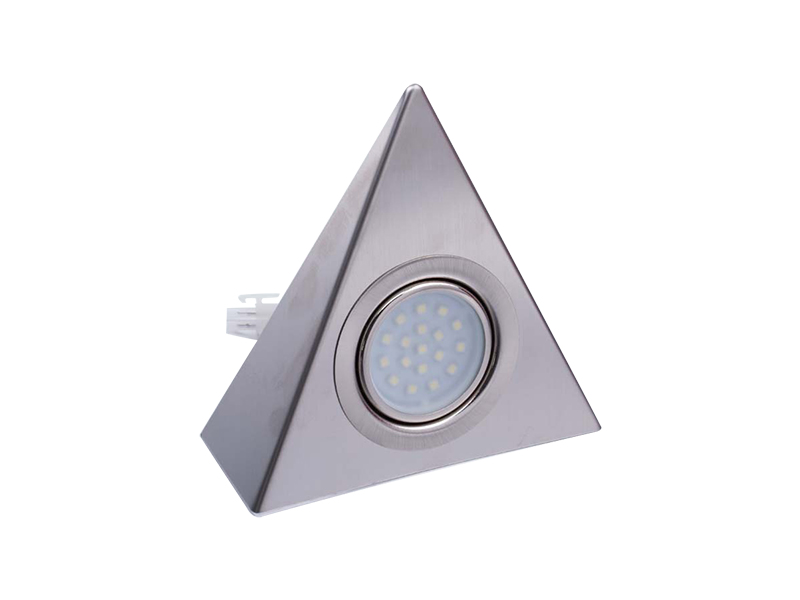What are the main functions of the triangular LED under-cabinet profile light?
The triangular LED under-cabinet profile light is a modern lighting solution designed for spaces such as kitchens, countertops, display cabinets, etc. Here are its main functions:
Provide illumination: It provides even, bright light, helping to reduce shadows and improve visibility in work areas.
Enhance aesthetics: The triangular design can serve as a decorative element, adding a sense of modernity and design to the space.
Improve safety: By providing ample light, it reduces accidents and incidents caused by insufficient light.
Energy saving: LED technology is more energy-efficient than traditional lighting, reducing energy consumption and electricity bills.
Long life: LED lamps have a much longer lifespan than traditional bulbs, reducing replacement frequency and maintenance costs.
Dimming function: Some models may have a dimming function, allowing users to adjust the brightness as needed.
Easy to install: Many triangular LED under-cabinet profile lights are designed to be easy to install to fit different cabinets and countertops.
Environmentally friendly: LED lamps do not contain harmful substances and, due to their long lifespan, reduce the generation of waste.
What maintenance is required for triangular LED under-cabinet profile lights?
Regular cleaning:
Cleaning is the first priority in maintaining the triangle LED under cabinet outline light. Dust and oil smoke will reduce the brightness and efficiency of the lamp.
Use a soft cloth or slightly damp non-woven cloth to gently wipe the surface of the lamp, and avoid using any rough materials that may scratch the surface.
If there are stubborn stains on the surface of the lamp, you can use a mixture of mild detergent and water to gently wipe it, and then wipe it clean with clean water and dry it.
Check the power cord and connection:
Regularly check the power cord for signs of wear, damage or looseness. Any damaged wires should be replaced immediately to avoid electrical failure or fire risks.
Check the fixture:
Make sure the lamp is firmly fixed under the cabinet and not loose. Loose lamps may move or fall when opening and closing the cabinet door.
Check the LED lamp beads:
Although LED lamp beads have a long lifespan, they can sometimes break down. If you find that a lamp bead is not lit or flickers, it may need to be replaced.
Avoid overheating:
LED lamps generate a certain amount of heat when they are in operation. Make sure there is enough air circulation around the lamp to help dissipate heat and avoid overheating that affects the life of the lamp.
Turn off the power properly:
Before cleaning or maintaining the fixture, make sure to turn off the power to prevent electric shock.
Use the right bulb:
If you need to replace a bulb, make sure to use an LED bulb that is compatible with the fixture to maintain optimal performance and avoid damage.
Avoid using chemical cleaners:
Avoid using cleaners with aggressive chemicals as they may damage the surface or internal components of the fixture.
Check the dimmer regularly (if applicable):
If your fixture is equipped with a dimmer, check its function regularly to ensure that it can adjust the brightness correctly.
Record maintenance history:
Keep a maintenance log that records the date of each cleaning, inspection, and replacement of parts. This helps plan future maintenance activities and provides a reference when needed.
Does this triangular LED under cabinet outline light installation require a professional?
Whether the installation of the triangular LED under cabinet outline light requires a professional depends on several factors:
Personal skills: If the user has certain electrical knowledge and skills, he may be able to install it by himself.
Installation complexity: Some lights may require hard-wired connections or specific mounting brackets, which may require professional skills.
Safety considerations: In order to ensure safety, especially when handling electrical connections, a professional may be required to ensure that safety standards are met.
Manufacturer recommendations: Some manufacturers may recommend or require installation by professionals to ensure quality installation and avoid warranty issues.
Time and resources: If users do not have the time or resources to install by themselves, hiring a professional may be a convenient option.
Customization needs: If users have special customization needs or want to integrate the lamps with other smart home systems, they may need the help of professionals.
Regulatory requirements: In some areas, electrical installations may need to comply with specific regulations and standards, which may require the knowledge and experience of professionals.














